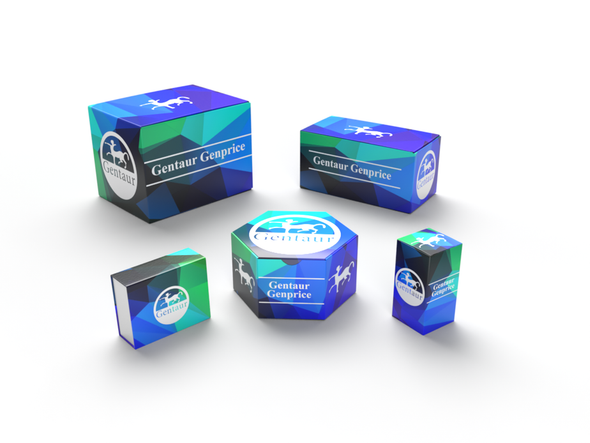Description
ACVR2B Antibody | 30-044 | Gentaur UK, US & Europe Distribution
Host: Rabbit
Reactivity: Human, Dog
Homology: N/A
Immunogen: Antibody produced in rabbits immunized with a synthetic peptide corresponding a region of human ACVR2B.
Research Area: Membrane, Signal Transduction
Tested Application: E, WB
Application: ACVR2B antibody can be used for detection of ACVR2B by ELISA at 1:312500. ACVR2B antibody can be used for detection of ACVR2B by western blot at 0.25 μg/mL, and HRP conjugated secondary antibody should be diluted 1:50, 000 - 100, 000.
Specificiy: N/A
Positive Control 1: Cat. No. 1211 - HepG2 Cell Lysate
Positive Control 2: N/A
Positive Control 3: N/A
Positive Control 4: N/A
Positive Control 5: N/A
Positive Control 6: N/A
Molecular Weight: 33 kDa, 58 kDa
Validation: N/A
Isoform: N/A
Purification: Antibody is purified by peptide affinity chromatography method.
Clonality: Polyclonal
Clone: N/A
Isotype: N/A
Conjugate: Unconjugated
Physical State: Liquid
Buffer: Purified antibody supplied in 1x PBS buffer with 0.09% (w/v) sodium azide and 2% sucrose.
Concentration: batch dependent
Storage Condition: For short periods of storage (days) store at 4˚C. For longer periods of storage, store ACVR2B antibody at -20˚C. As with any antibody avoid repeat freeze-thaw cycles.
Alternate Name: ACVR2B, HTX4, ACTRIIB, ActR-IIB
User Note: Optimal dilutions for each application to be determined by the researcher.
BACKGROUND: Activin receptors are all transmembrane proteins, composed of a ligand-binding extracellular domain with cysteine-rich region, a transmembrane domain, and a cytoplasmic domain with predicted serine/threonine specificity. Type I receptors are essential for signaling; and type II receptors are required for binding ligands and for expression of type I receptors. Type I and II receptors form a stable complex after ligand binding, resulting in phosphorylation of type I receptors by type II receptors. Type II receptors are considered to be constitutively active kinases. ACVR2B is activin A type IIB receptor, which displays a 3- to 4-fold higher affinity for the ligand than activin A type II receptor.










